ÜBER SERIES
So what does Über mean in the grand scheme of things in the world of ACG?
The core of the Über Series is the DFM/MC combination. Translated into English, this is the Dual Filter Modular pre-amp and the Multi Coil pickups. This was developed as a complete system in collaboration with John East, Aaron Armstrong, and ACG. As those of you who have been following me for a while will know, I have been flying the flag for filter pre-amps for over 20 years now. While I’m never a fan of blowing my own trumpet, I can say that with the exception of Wal and Alembic, no other builder has been using filter pre-amps longer than I have. (Being cripplingly British, that was painful to admit.)
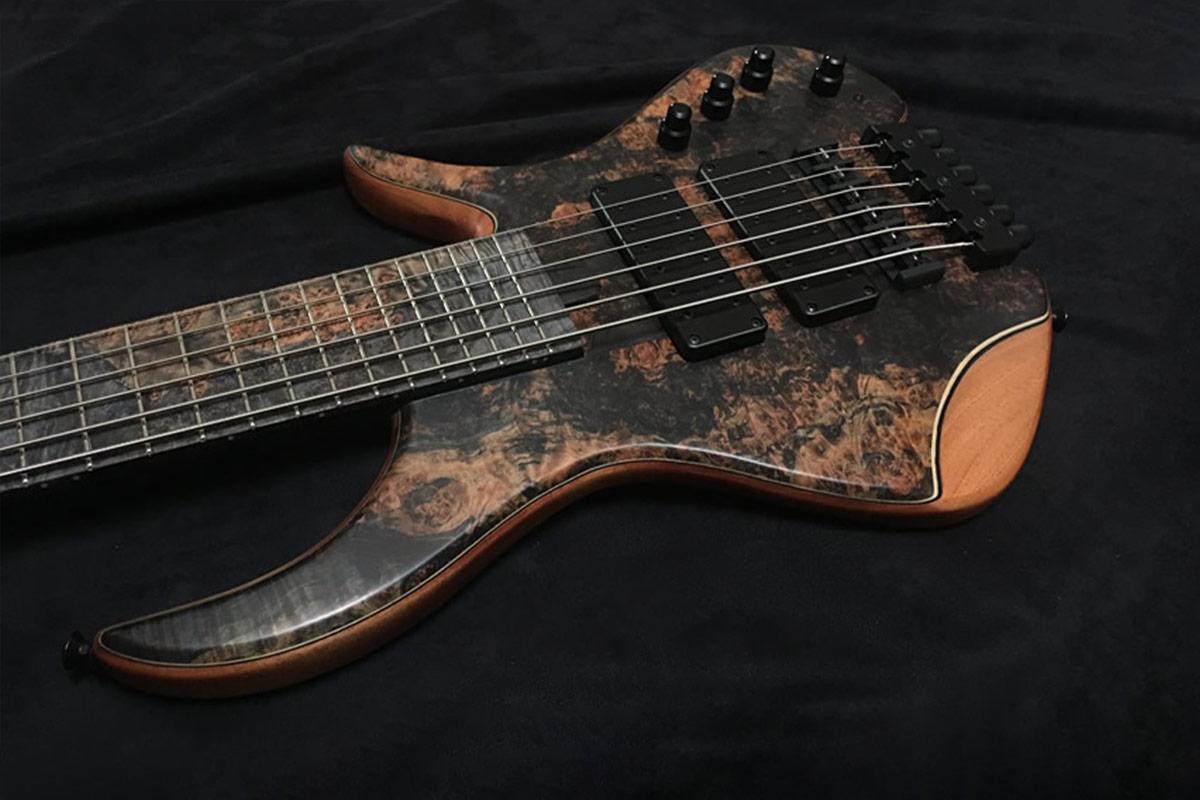
The DFM is the fourth-generation ACG/East pre-amp design. Apart from the essential low-pass filters, it has several other features to further sculpt your sound, details of which can be found in the electronics section. It is one of the most advanced on-board filter pre-amps currently available and is exclusive to the ACG Über Series.
Part two of the system is the Armstrong Multi Coil pickups. The pickups are on their third version, having been tried in various different windings and bobbin sizes. So, what is a multi-coil pickup? As you will notice, the MC pickups have pole pieces, whereas none of the B Series pickups feature this. Each pole piece has its own coil, which means that in a 4-string pickup, there are 8 coils, rather than the 2 coils in a standard humbucker or 1 coil in a single coil. Each string has two pole pieces, so two coils. These are combined into a humbucker. In a 4-string pickup, there are now 4 humbuckers per pickup casing. (This makes them more expensive than a standard pickup, requiring much more time to produce.)
The important part, which I believe is essential for getting the best out of the MC pickups, is that these independent humbuckers should not simply be connected together and sent to the pre-amp. They need to be kept separate from each other at this stage so they don’t interact with each other.
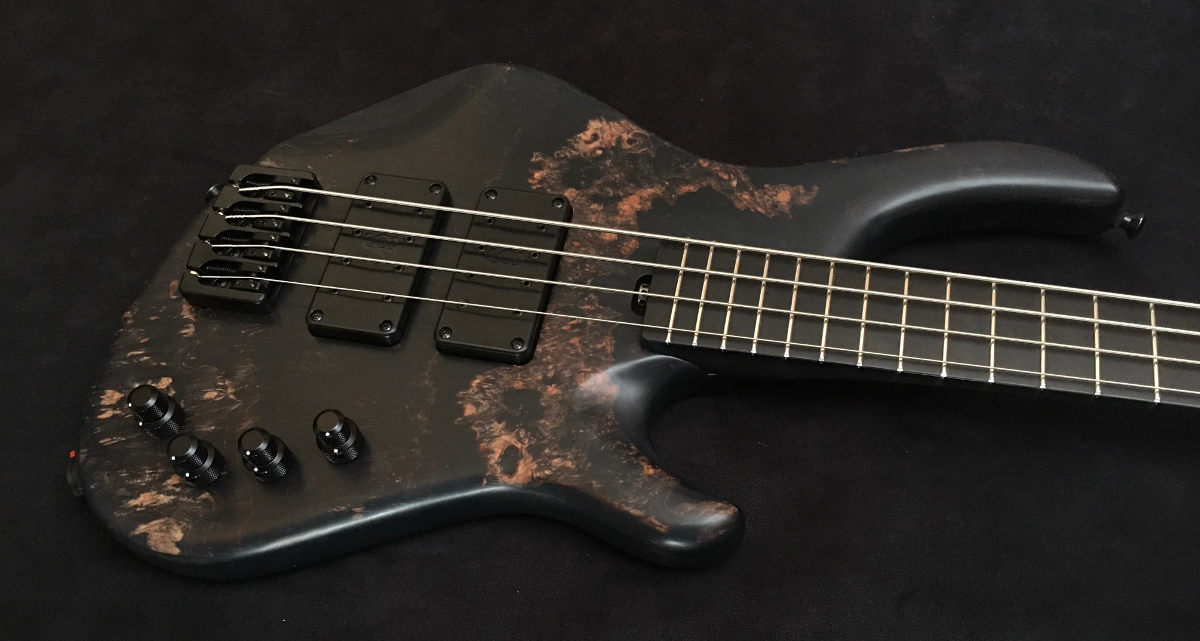
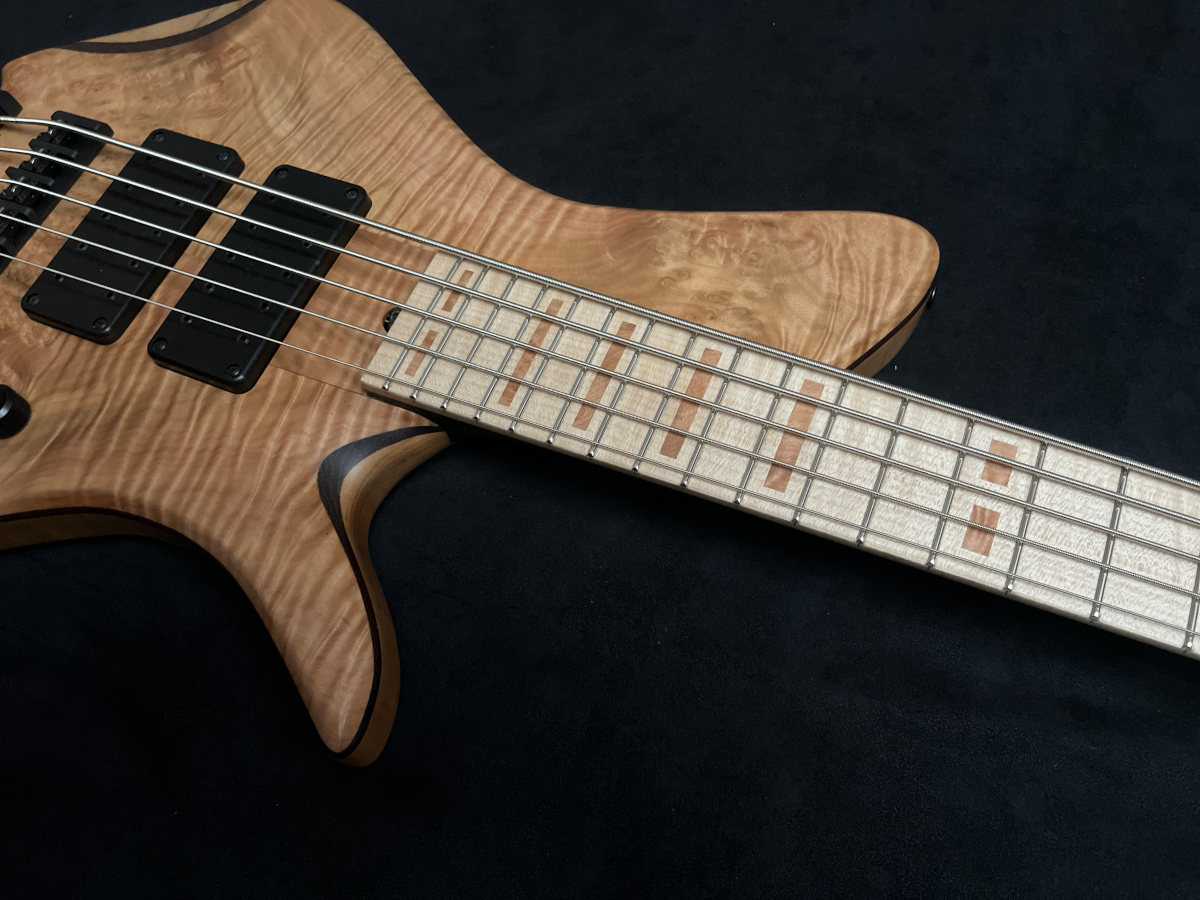
Part three of the system: Back to John East. Each separate humbucker is fed into the IB1 interface board before going to the DFM pre-amp. These boards electronically mix the output from the MC pickups, ensuring they don’t interact with each other. The output from the IB1 then goes to the DFM input. While every MC pickup is identical—or as identical as hand-wound pickups can be—there is a marked difference between the bridge and neck pickups, more than would be generated by the different positions alone. There are two different versions of the IB1 interface: the IB1f, which is the flat-response version in the neck position, and the IB1r, which has an interactive pickup resonance in the upper presence region for the bridge position. In simple terms, this makes the bridge pickup sound more like a bridge pickup, being brighter and more aggressive. This use of the MC pickups and the interface reduces crosstalk between the coils and generates a very even and articulate voice across the entire fretboard.
When combined with the DFM, they have a distinct character which, while present, does not dominate every aspect of the sound. What does this mean? Well, I think of several basses as “character basses”—you know them straight away because they always sound like themselves. While this can certainly be useful and even desirable, it is also always there; this is the fundamental character of the bass, always present. What I have tried to achieve is an ACG character, but not one that is overpowering, where everyone hears it straight away. I wanted the character to complement what you bring to the table and lend itself to your voice, not drown it out. I could add more character to the sound, but I feel that is more your job. If I can provide the foundation, the rest is up to you.
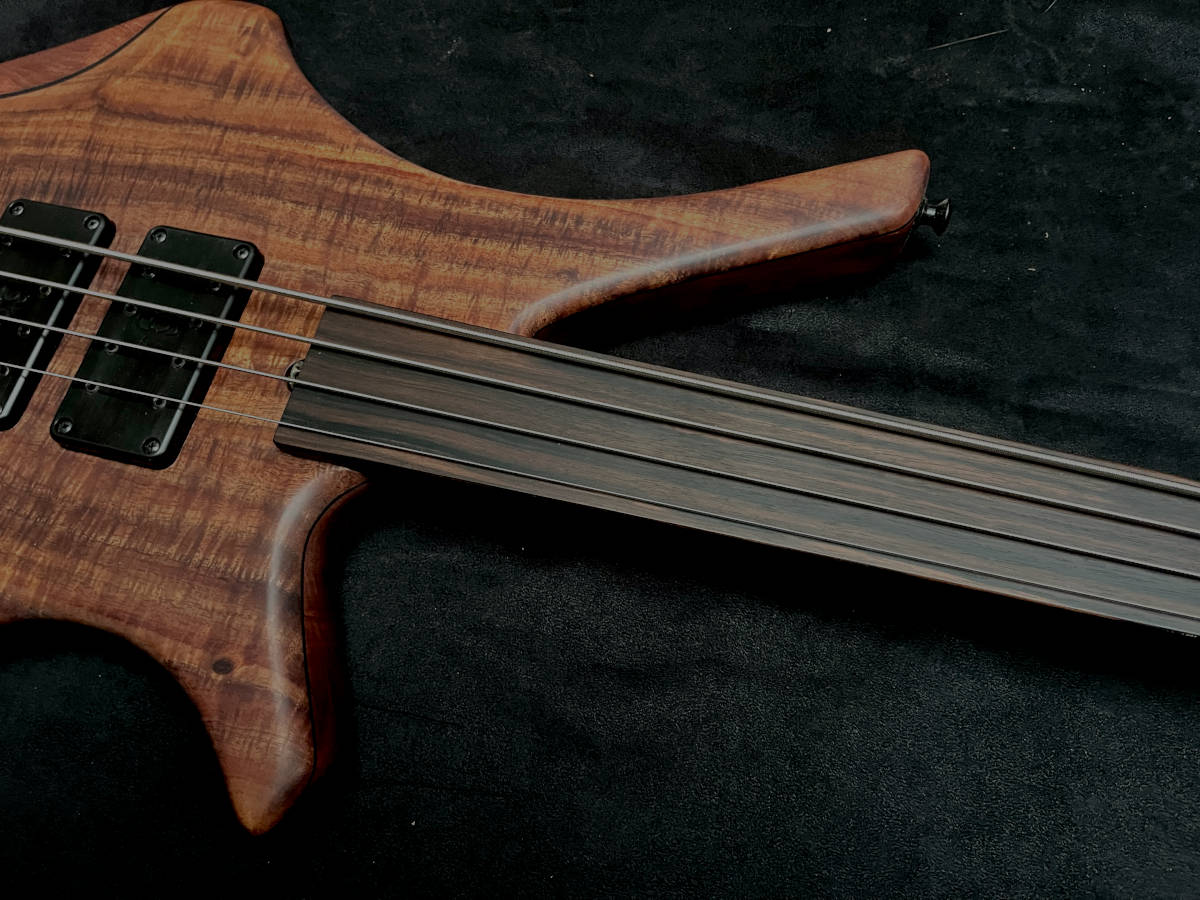
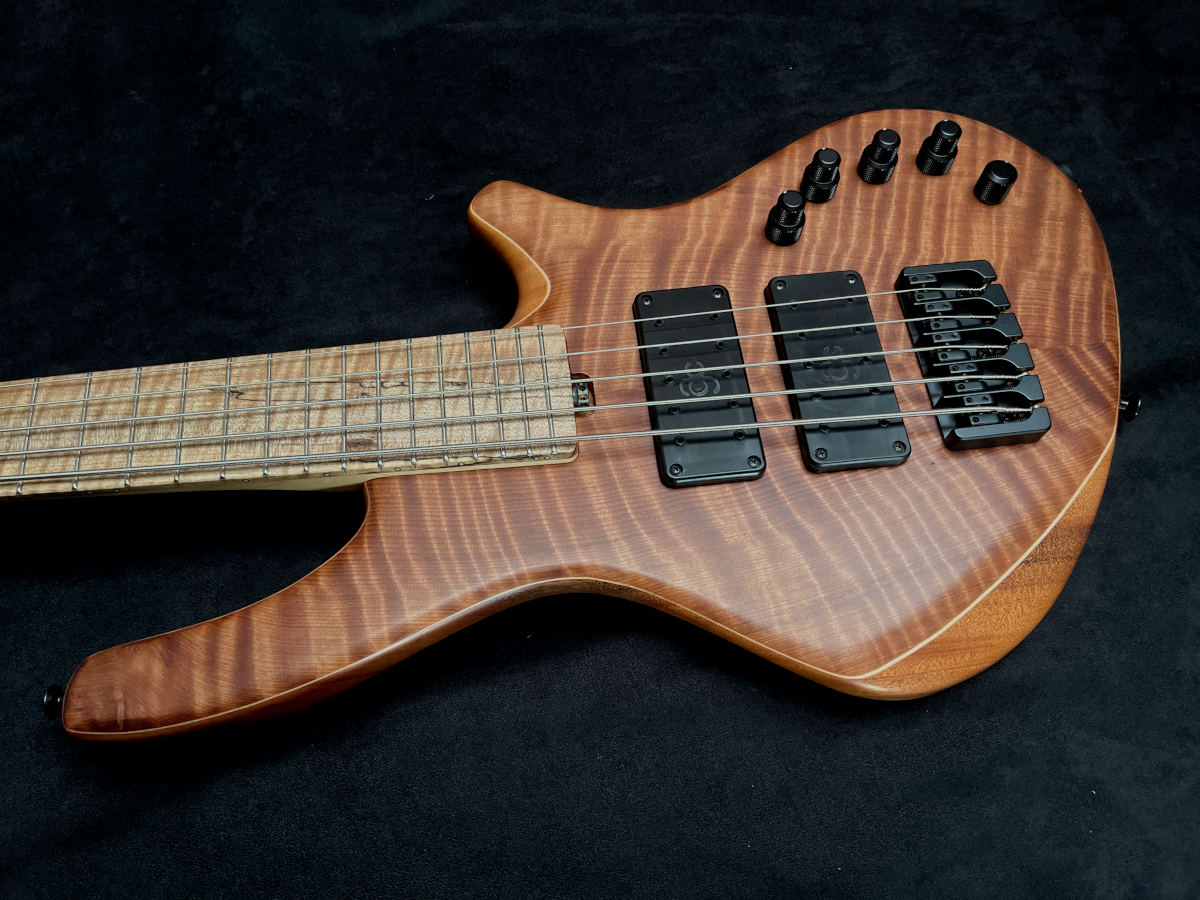
An example: The DFM is a clean pre-amp most of the time, but it can be pushed to produce a nice, subtle breakup. I like this, and I know others do too. This could be increased and made present all the time, but what if you don’t want it there all the time? If it is baked into the pre-amp, the choice is gone. It’s very easy to add a bit of breakup to a bass; there are more pedals and processors than you will ever need. So, if the pre-amp is mostly clean unless really pushed, you keep the choice. This means a bit less imposed character, and a bit more room for you to add your own.
While I am very happy with the current DFM/MC setup, I will continue to look for ways to improve the system with the help of my partners in crime, Aaron and John.
It goes without saying that all the best woods I have are available in the Über Series, including what are now “secret stash” woods. As many of you will know, one of my main suppliers, Larry Davies, passed away this year (2024), and with that, the source of the ART and AI woods has come to a halt. I can’t get any more of these special woods, so the best of these are now only available in the Über Series.
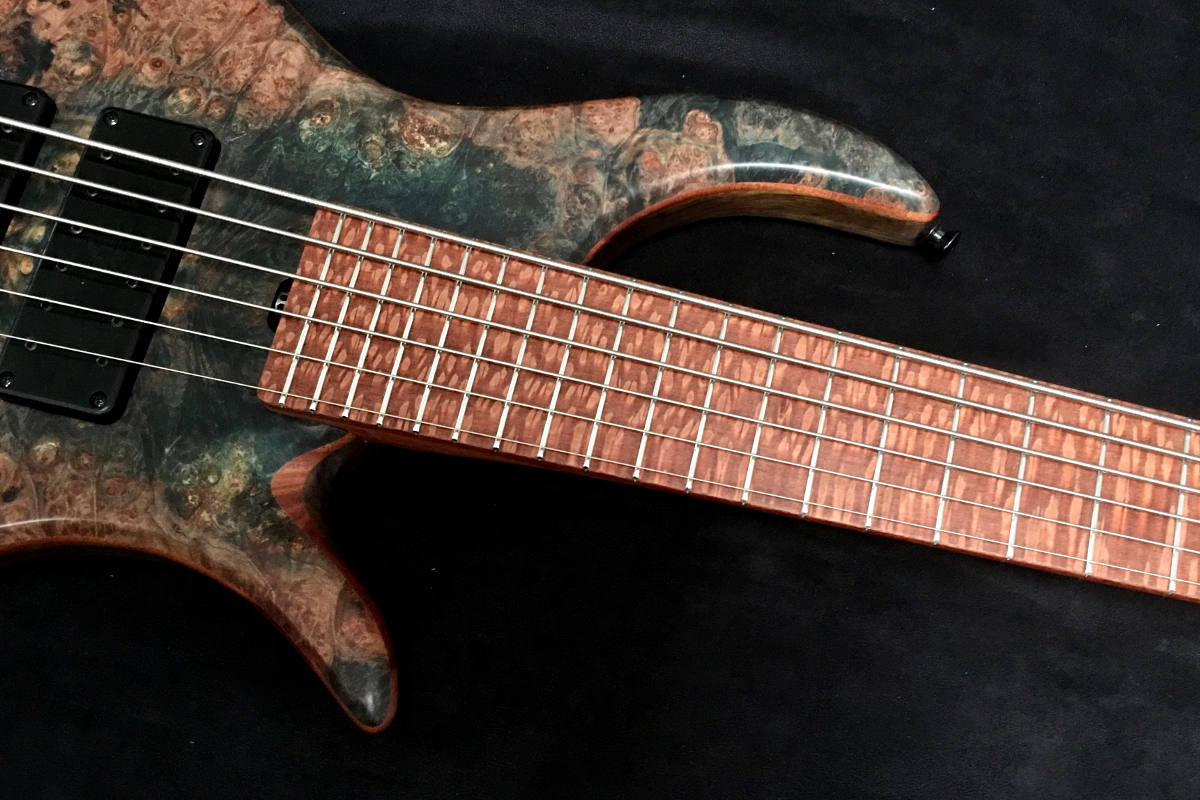
SPEC YOUR BASS

